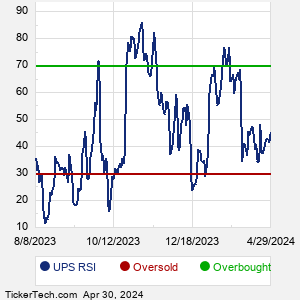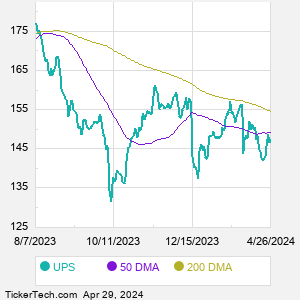United Parcel Service is a package delivery company and a provider of global supply chain management solutions. Co.'s services include transportation and delivery, distribution, contract logistics, ocean freight, air freight, customs brokerage and insurance. Co. has two reporting segments: U.S. Domestic Package and International Package (collectively, global small package). Co.'s global small package operations provide time-definite delivery services for express letters, documents, packages and palletized freight via air and ground services. These services are supported by various shipping, visibility and billing technologies.
When researching a stock like United Parcel Service, many investors are the most familiar with Fundamental Analysis — looking at a company's balance sheet, earnings, revenues, and what's happening in that company's underlying business. Investors who use Fundamental Analysis to identify good stocks to buy or sell can also benefit from UPS Technical Analysis to help find a good entry or exit point. Technical Analysis is blind to the fundamentals and looks only at the trading data for UPS stock — the real life supply and demand for the stock over time — and examines that data in different ways. One of these ways is called the Relative Strength Index, or RSI. This popular indicator, originally developed in the 1970's by J. Welles Wilder, looks at a 14-day moving average of a stock's gains on its up days, versus its losses on its down days. The resulting UPS RSI is a value that measures momentum, oscillating between "oversold" and "overbought" on a scale of zero to 100. A reading below 30 is viewed to be oversold, which a bullish investor could look to as a sign that the selling is in the process of exhausting itself, and look for entry point opportunities. A reading above 70 is viewed to be overbought, which could indicate that a rally in progress is starting to get crowded with buyers. If the rally has been a long one, that could be a sign that a pullback is overdue. |



